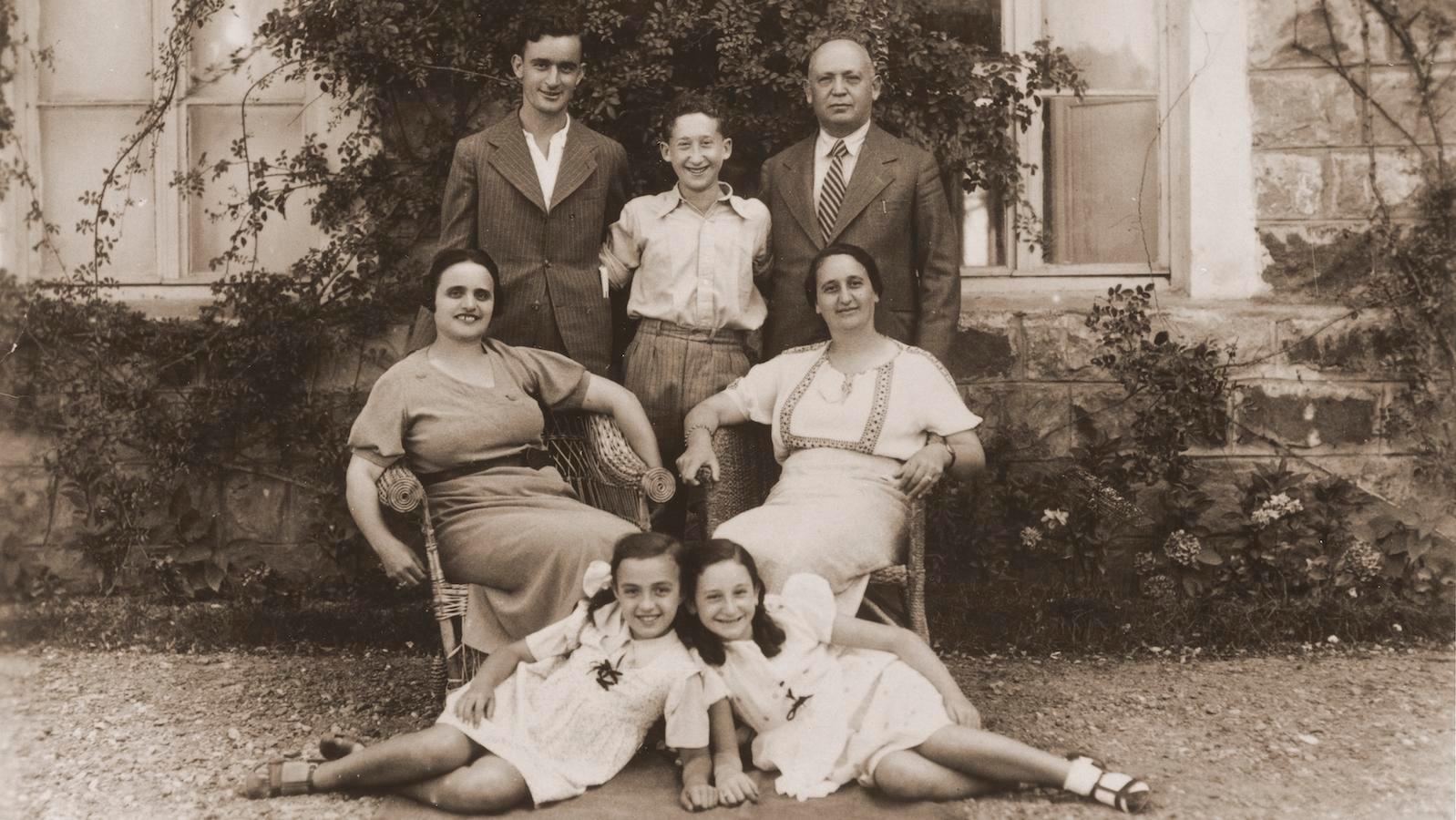Judeo-Spanish (JS) is a language of Hispanic stock spoken and written by Jews of Spanish origin. Its phonology, morphology, and lexicon derive, for the most part, from pre-16th-century Spanish, and, as with other Jewish languages, the influence of Hebrew is felt, particularly in lexical areas associated with religious observance and practice, and, more restrictedly, in affective and taboo uses of Hebrew words and concepts.
Through contact with the languages of those Mediterranean countries in which the Jews settled after their expulsion from Spain in 1492, a number of lexical items, as well as a smaller number of morphological and syntactical elements, have entered the language from Turkish, Arabic, French, and, to a lesser extent, Italian.
The Expulsion From Spain
Upon leaving Spain whole communities of Jews headed east through Italy to the lands of the Ottoman Empire at the invitation of Sultan Bayazid, and important centers, which survived until the Second World War, grew in present-day Turkey, Greece, Israel, and Egypt, with smaller ones in Yugoslavia, Bulgaria, Romania, and the island of Rhodes. Their speech is described by linguists as eastern JS.
For a century or so prior to the Expulsion, persecuted Spanish Jews also found shelter in North Africa, and speech communities grew along the northern coast of Morocco. The speech of this region, which bears a marked resemblance to its eastern counterpart both phonetically and in the retention of Old Spanish lexemes, is denominated western.
With your help, My Jewish Learning can provide endless opportunities for learning, connection and discovery.
The 20th-century witnessed the annihilation of many of the eastern Mediterranean communities as a result of Nazi persecution, and in the late 1950s the fear of persecution also threatened many of the Moroccan communities. And so, with the displacement and dispersal of the old JS-speaking communities from their traditional centers, largely towards Israel but also to Europe, North and South America, speakers came into contact with, and eventually adopted, the language of their new surroundings.
Naming Ladino

A current debate on JS nomenclature raises some interesting points about linguistic evolution and linguistic consciousness. In the eastern Mediterranean the language is referred to by a variety of names. In general, two persons who speak the same language do not feel the need to identify to one another the language they are speaking; however, the need for identification does arise when they come into contact with non-native speakers. This could well explain why, following the break-up of traditional communities in the eastern Mediterranean in the early 19th century, the language is confusingly referred to by a variety of names.
Spanyol is perhaps the most commonly used among speakers of the language, with its unmistakable reference to their linguistic and cultural origins. Its widespread use is confirmed by the Modern Hebrew coinage Spanyolit (Spanyol + Heb. suffix for forming language names), the name by which the language was referred to until quite recently in Israel. Ladino, probably the earliest attested name, has the widest currency today, and certainly so in Israel where the largest speech-communities in the modern world are to be found. The term has another application which is discussed below.
The names Judezmo and Judió/Jidió, which are registered in some 19th- and early 20th-century communal publications, clearly have the function of underlining a Jewish identification among speakers. Judezmo is the Spanish word for “Judaism”, and, for this reason, is used by certain scholars today who wish, on ideological grounds, to draw a semantic equation between Judezmo and Yiddish; however, it seems rather late in the day to rename the language. Faced by this terminological plurality, scholarship has generally opted for the more descriptive and neutral “Judeo-Spanish.”
In the western Mediterranean, the language is frequently referred to as hakitia (formed on Moroccan Arabic haka “to converse” + diminutive suffix), although it is interesting to note that with the renewed impact of Modern Spanish in this area in the 19th century, the term is reserved by speakers to describe an artificial language of humor which abounds in archaic forms of Spanish and Hispanicized Arabisms, or else to the language as spoken in some distant past. However, though it is more similar to Modern Spanish than its eastern counterpart, the language continues to preserve many characteristic features.
Up to the beginning of the 20th century the language was almost always written in Hebrew characters using the standard Hebrew alphabet with some modifications, mostly in the form of diacritical marks, to accommodate Hispanic phonemes. The earliest texts appeared in “square” characters either with or without vowels, but the bulk of printed material is in a cursive (rabbinic) script. Some early manuscripts preserve a cursive script known as solitreo, which is still in use among native speakers in personal correspondence, for example.
Origins of Ladino
Two views about the origins of JS prevail. One holds that Jews in medieval Spain spoke the same language as their non-Jewish contemporaries, while drawing on Hebrew terms to express religio-cultural concepts not current in Spanish (for example, Shabbat), and preserving, at the same time, a number of archaisms. The language thus acquires a separate linguistic identity only after 1492.
The second view, which is gaining greater currency, maintains that JS, while being essentially a form of spoken medieval Spanish, had linguistic features of its own long before 1492, owing not merely to the presence of Hebrew words, but also to the peculiar sociolinguistic conditions which affected Jewish communities during their long history in the Iberian Peninsula, and to the greater linguistic receptivity by Jews to the waning Arabic culture. Thus the Arabic borrowing ahad (“the first [day]”) is retained for “Sunday” in preference to the Spanish domingo (from Latin dies Dominicus “the Lord’s day”), with its Christian connotation; ahad appears in medieval texts and continues to be in use in both eastern and western JS.
Ladino Literature
The first editions of the JS Bible translations appeared in the 16th century, although these are believed to reflect an earlier tradition elaborated by the Spanish Jews long before their expulsion. The language of these texts is usually referred to in scholarship as Ladino: it is characterized by an artificiality which permeates, especially, the lexicon and syntax, and which is the result of a method of translation where the strictest adherence to the Hebrew original is the rule. It is generally accepted that these texts do not reflect the spoken language, although clearly they share common features with it.
Two centuries later, the first complete Ladino translation of the Old Testament in Hebrew characters (1739-45) was edited in Constantinople by Abraham Assa, and editions of it continued to be produced throughout the eighteenth and nineteenth centuries. This highly literal method of translation was so widely accepted that it was even adopted by Christian missionaries in 1873 in their JS Bible translation.
The same method is also reflected by translations of liturgical works which first appeared in the sixteenth century and have continued to do so up to the present. Among them are the Ladino translations of the daily and festival prayerbooks, manuscript fragments of which date from before the Expulsion, the Haggadah, and the Pirkei Avot [Ethics of the Patriarchs, a talmudic book]. Halachic [Jewish legal] literature dating from the 16th century also displays this translation language and incorporates much Hebrew phraseology; however, the language does not show the same degree of rigid adherence to Hebrew as that found in the Ladino Bible and liturgical translations. Among these is a selection from Yosef Caro’s Shulhan Arukh [a major code of Jewish law] entitled Shulhan Hapanim (Salonica, 1568).
The reader of JS, as opposed to Ladino, literature may be struck by the fact that the language he is reading reflects a spoken rather than a literary variety. The sensation is of a strong tradition of oral literature, which is eventually committed to paper. A notable case is that of the traditional ballads known as romances, which comprise many medieval Spanish examples of the genre, as well as more recent ones based on the traditional model. But JS texts in Hebrew characters also number among the earliest witnesses of Spanish literary activity. The kharjas incorporated into the poetry of such major figures of the Golden Age of Hebrew verse in Spain as Yehudah Halevi in the eleventh and twelfth centuries, are an example of this as is a fifteenth-century fragment of an early JS poem on the biblical story of Joseph, Coplas de Yocef.
The best-known and most widely translated JS work of the post exilic period is the Me’am Lo’ez (1730), which was begun by Yaacov Khuli and continued over a long period, in series form, by a number of different authors writing under the same title. A midrashic work, the Me’am Lo’ez is structured mainly on the Pentateuch and spans the sources of Jewish thought. The beginning of the 19th century saw the growth of a secular literature, which was popular, for the most part, and included a sizable corpus of original compositions such as novels, short stories, plays, and popular histories as well as adaptations of major European novels of the period, where the impact of French on JS is significantly felt. This is also observed in the JS press which began to flourish in the eastern Mediterranean at the same time; only a small number of newspapers continue to appear today.
There can be no doubt, therefore, as to the slow disappearance of JS as a spoken language. Traditional linguistic registers are gradually being overtaken by those of the co-territorial languages, and the language is no longer transmitted to succeeding generations in the normal manner.
Today, only small clusters of native speakers, usually of an advanced age, are to be found scattered around the globe. However, although the spoken language may have been the principal vehicle for the transmission of JS culture up to now, as the language “dies,” more and more people seem to be taking to the pen in order to write in and about it.
At first sight this may appear paradoxical. However, a spoken language looks partly to the written word for conservation, and this becomes, in turn, a different vehicle for the transmission of a culture and guards against its annihilation.
Reprinted with permission from The Blackwell Companion to Jewish Culture:From the Eighteenth Century to the Present, Edited by Glenda Ambranson (Blackwell Publishers).
Avot
Pronounced: ah-VOTE, Origin: Hebrew, fathers or parents, usually refering to the biblical Patriarchs.



